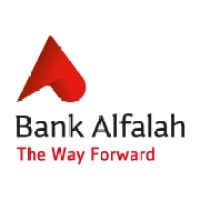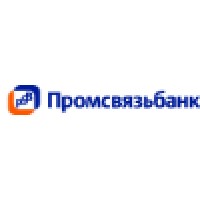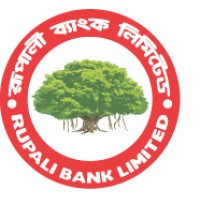Company Cyber Security Posture
NANA
NA Company Details
NA
NA
NA
NA
NA
NA
Scan still pending
NA
NA
Between 200 and 800
This score is AI-generated and less favored by cyber insurers, who prefer the TPRM score.
 NA Global Score
NA Global Score.png)

Company Scoring based on AI Models
| Model Name | Date | Description | Current Score Difference | Score |
|---|---|---|---|---|
| AVERAGE-Industry | 03-12-2025 | This score represents the average cybersecurity rating of companies already scanned within the same industry. It provides a benchmark to compare an individual company's security posture against its industry peers. | N/A | Between 200 and 800 |
Company Cyber Security News & History
| Entity | Type | Severity | Impact | Seen | Url ID | Details | View |
|---|
Company Subsidiaries

NA
Access Data Using Our API

Get company history
.png)
NA Cyber Security News
Open banking: CBN cautions Nigerian banks, fintechs on cybersecurity risks
The Central Bank of Nigeria (CBN) has warned Nigerian banks and fintechs to be wary of cybersecurity risks as they move into open banking.
The cyber security imperative: Future-proofing Nigeria’s fintechs
Nigeria's fintech sector hasn't remained untouched, with reports of three organisations losing over N5 billion in early 2023 to hacking incidents.
CBN reduces cybersecurity levy to 0.005% on electronic transactions
CBN reduces cybersecurity levy to 0.005% on electronic transactions ... Kindly share this story: Getting your Trinity Audio player ready... The ...
CBN urges banks to invest heavily in cybersecurity
The Central Bank of Nigeria (CBN) has urged banks in the country to make significant investments in cybersecurity to safeguard depositors' ...
CBN Reintroduces Controversial Cybersecurity Levy
The Central Bank of Nigeria (CBN) says it will continue to enforce payment of the mandatory levy on all electronic transactions by banks and other financial ...
CBN to enforce 0.005% cybercrime levy on transactions
The Central Bank of Nigeria (CBN) has announced the enforcement of a 0.005 per cent levy on all electronic transactions conducted by banks and ...
CBN Issues Clarification on the Monetary Policy Guidelines: Denies Reintroduction of Cybersecurity Levy
The Central Bank of Nigeria (CBN) has responded to misinterpreting or misrepresenting its biennial publication on Monetary, Credit, ...
We’ve Not Reintroduced Cybersecurity Levy – CBN
The Central Bank of Nigeria (CBN) says it has not reintroduced the cybersecurity levy that was previously suspended.
CBN clarifies suspension of cybersecurity levy
The Central Bank of Nigeria (CBN) has temporarily withdrawn its biennial Monetary, Credit, Foreign Trade, and Exchange Policy Guidelines for 2024-2025 ...

NA Similar Companies

Bank Alfalah Limited
Bank Alfalah is one of the largest private Banks in Pakistan with a network of over 1100 branches in more than 200 cities across Pakistan with an international presence in Afghanistan, Bangladesh, Bahrain, and a representative office in the UAE. The Bank is owned and operated by the Abu Dhabi Group.

Promsvyazbank
OJSC Promsvyazbank (PSB) is a Russian privately-owned universal commercial bank. Founded in 1995, PSB currently ranks 9th by assets among Russian banks (Interfax as of 01/01/13). PSB offers a comprehensive range of banking services to corporate and individual customers. PSB’s domestic and interna

BBVA
At BBVA we are leading the transformation of banking worldwide, united in pursuing our goal of bringing the age of opportunity to everyone. Firmly focused on the future, our on-going digital transformation is already producing disruptive innovations that power our vision of banking. Every one of o

Rupali Bank Limited
Rupali Bank (Bengali: রূপালী ব্যাংক) is a commercial bank in Bangladesh. It was established as a nationalised bank in 1972 under the Bangladesh Banks Nationalisation Order, through the amalgamation of the branches of Muslim Commercial Bank, Australasia Bank and Standard Bank that were operating in E

Intesa Sanpaolo
Intesa Sanpaolo è il maggior gruppo bancario in Italia con una significativa presenza internazionale. Il suo business model distintivo la rende leader a livello europeo nel Wealth Management, Protection & Advisory e ne caratterizza l’orientamento al digitale. I’impegno in ambito ESG prevede, entro i

UniCredit
UniCredit exists to empower communities to progress. To deliver for all our stakeholders across Europe and unlock the potential within each individual and community we serve. We are a pan-European bank: our 13 banks across the continent work together as one, leveraging the strength of the collectiv

Frequently Asked Questions
Explore insights on cybersecurity incidents, risk posture, and Rankiteo's assessments.
NA CyberSecurity History Information
How many cyber incidents has NA faced?
Total Incidents: According to Rankiteo, NA has faced 0 incidents in the past.
What types of cybersecurity incidents have occurred at NA?
Incident Types: The types of cybersecurity incidents that have occurred include .
Additional Questions
What Do We Measure?
















Every week, Rankiteo analyzes billions of signals to give organizations a sharper, faster view of emerging risks. With deeper, more actionable intelligence at their fingertips, security teams can outpace threat actors, respond instantly to Zero-Day attacks, and dramatically shrink their risk exposure window.
These are some of the factors we use to calculate the overall score:
Identify exposed access points, detect misconfigured SSL certificates, and uncover vulnerabilities across the network infrastructure.
Gain visibility into the software components used within an organization to detect vulnerabilities, manage risk, and ensure supply chain security.
Monitor and manage all IT assets and their configurations to ensure accurate, real-time visibility across the company's technology environment.
Leverage real-time insights on active threats, malware campaigns, and emerging vulnerabilities to proactively defend against evolving cyberattacks.




